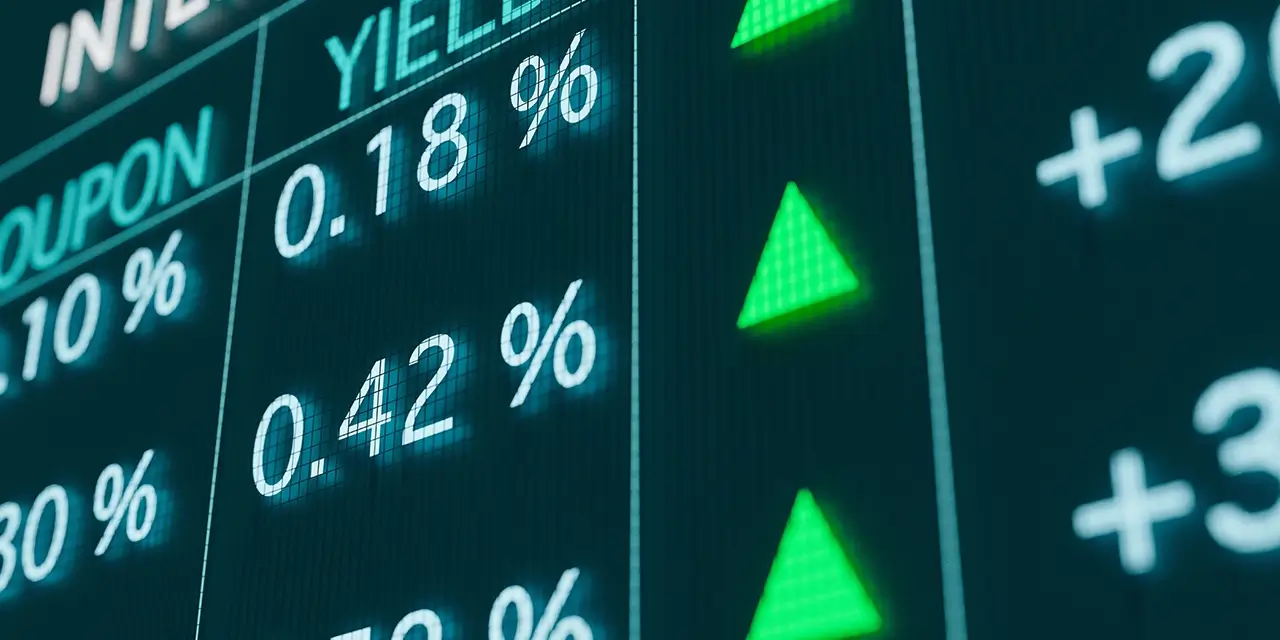By Caroline Grimont
I don’t know about you, but the volatility in the market since January 20th has been stressing me out. This past week, particularly since the U.S. “Liberation Day” tariffs announced on April 2, has been a doozy. As of April 6, the tech-heavy NASDAQ index is down over 8.5%, and the broader S&P 500 is down 8.2%. Things are a little bit better in Canada, but not by much, as the S&P TSX Composite index is down a little over 5.9%. But one asset seems to be doing better than most – cryptocurrency, as the leading cryptocurrency, Bitcoin, is down 2% for the same time period in Canadian dollar terms.
Even though Bitcoin ended the weekend lower, in the three days immediately after the tariff announcements on April 2, the cryptocurrency actually rose, on both Thursday and Friday, even as the U.S. stock markets recorded one of the biggest two-day losses in history.
This divergence is interesting, especially since Bitcoin has been observed, in the past, to move somewhat in lockstep with large tech stocks. Does this mean that Bitcoin is now a safe haven, or even a hedge against the volatility in stocks?
Before we get into that, let us consider what exactly cryptocurrencies are, and the blockchain technology that underlies all of it.
What are Bitcoin, Cryptocurrencies, and Blockchain?
PWC defined the cryptocurrency landscape and its key players like this:
“Blockchain is the technology that enables the existence of cryptocurrency (among other things). Bitcoin is the name of the most recognized cryptocurrency, the one for which blockchain technology, as we currently know it, was created. A cryptocurrency is a medium of exchange such as the U.S. dollar but is digital and uses cryptographic techniques and its protocol to verify the transfer of funds and control the creation of monetary units.”
Let’s break that down further.
Blockchain is a technology that functions like a giant global ledger, that keeps track of all transactions across a decentralized network. The transactions recorded are permanent, and tamper proof.
Now cryptocurrencies are virtual currencies, that use cryptography for security, and to operate.
(Aside because I find this fascinating: Cryptography is basically using ciphers and code to hide your private messages from the wider public. The earliest known example of this was from around 400 BCE, when the Spartans of ancient Greece used a scytale, which means baton, to pass messages between military commanders. It worked like this: a baton or a stick first had a leather or parchment wrapped around it in a spiral, a message was written on it, and then unwrapped, which scrambled the message. To decode it, the unravelled strip would need to the wrapped in the same way around another baton, or stick, that had the exact same proportions as the original. None of this has anything to do with Bitcoin, I just thought it was interesting. Anyway, back to cryptocurrencies –)
Unlike Canadian dollars, or Euros, cryptocurrencies don’t have a government or bank backing them. Instead, they work on a decentralized network of computers – the blockchain we talked about earlier.
Bitcoin is the most well-known example of a cryptocurrency, though many others exist, like Ethereum, or Dogecoin.
Why is the Bitcoin Price Diverging from Stocks?
The short answer is – no one knows for sure, but there are some points that may be driving the prices higher. Here are three:
At the end of last week, known Bitcoin Bull (someone who believes that Bitcoin prices are likely to rise – in fact, he said Bitcoin could reach US$200,000 this year, and then rise to US$500,000) at Standard Chartered Bank Geoffery Kendrick said, “Over the last 36 hours I think we can also add ‘US isolation’ hedge to the list of Bitcoin uses,” and added that of the Magnificent Seven stocks, only Microsoft outperformed Bitcoin in the recent market sell-off.
According to CryptoSlate, which saw Kendrick’s note, Kendrick said Bitcoin’s relative resilience signals a growing role as a dual-purpose asset — part growth trade, part hedge against macro risks. The article states that he concluded that Bitcoin is proving to be “the best of tech,” benefiting when growth stocks rally while also offering defensive characteristics across multiple market regimes, and ended his analysis with, “HODL.”
Another development that had Bitcoin believers cheering was that U.S. Treasury Secretary Scott Bessent said in an interview to Tucker Carlson that, “There are lots of different stores of value over time, Bitcoin is becoming a store of value, gold has historically been a store of value.”
A third argument is that companies like GameStop and Strategy (Formerly MicroStrategy) are buying up Bitcoin. On March 25th, GameStop announced that its board unanimously approved an update to its investment policy to add Bitcoin as a treasury reserve asset, and the next day announced an issuance of US$1.3 billion Convertible Senior Notes for general corporate purposes, including the acquisition of Bitcoin, while Strategy announced it had bought US$ 1.92 billion worth of Bitcoin.
Could Bitcoin Be Considered a Safe Haven? What Are the Risks?
Bitcoin is a volatile and risky asset, but there are some arguments in favour of why it could be an alternative to stocks, or perhaps even a safe haven. Here are some:
- Decentralization: As we explained earlier, cryptocurrencies, including Bitcoin, are not controlled by a government, or any single institution like a bank. So if you’re worried about the political situation, or about any country or government, this could be an avenue to consider.
- Supply Shortage: There can only ever be 21 million Bitcoins in the world, of which over 19 million are mined. This means that supply is limited, which could make it store of value in the future.
- Borderless: You can access and trade Bitcoin anywhere in the world, so as long as there’s internet, you can access your Bitcoin wallet. This could be attractive to investors in geopolitically sensitive areas.
On the other hand, there are arguments against Bitcoin being a safe haven, including high volatility, government regulation across the globe, a lack of intrinsic value (unlike gold, which is used in jewellery, or in electronics, and even food, Bitcoin isn’t really used anywhere,) and a potential for speculation and market manipulation.
What Can an Investor Do?
If you believe in the story of Bitcoin, but are worried about the potential for downside, volatility and risk, you could consider investing in a stock that works as a Bitcoin-proxy or gain exposure to the movement of Bitcoin and other cryptocurrencies ecosystem by investing in one of the world’s leading cryptocurrency exchanges.
If this sounds exciting, Harvest product line has two pairs of ETFs that aim to do just that. One pair offers exposure to Strategy (formerly MicroStrategy Inc. , a business intelligence company with a large Bitcoin treasury exposure, and the pair offers access to Coinbase, one of the world’s leading cryptocurrency exchanges.
For exposure to Strategy consider the Harvest MicroStrategy Enhanced High Income Shares ETF (MSTE:TSX). It invests all its assets, directly or indirectly, in Class A shares of Strategy. MSTE is a levered version that use modest leverage of 25%. There is an unlevered version, the Harvest MicroStrategy High Income Shares ETF (MSTY:TSX). Strategy provides business intelligence, mobile software, and cloud-based services. The company’s securities have developed into a Bitcoin treasury holding company, due to its substantial holdings in the world’s premier digital currency.
For exposure to Coinbase consider the Harvest Coinbase Enhanced High Income Shares ETF (CNYE). It invests all its assets, directly or indirectly, in shares of Coinbase. CNYE is the levered version that uses a modest leverage of 25%. It too has an unlevered version, the Harvest Coinbase High Income Shares ETF (CONY:TSX). Coinbase operates a cryptocurrency exchange platform, the largest in the United States in terms of trading volume. Coinbase consistently ranks as the safest crypto exchange on the planet.
An added featured that investors find attractive is that all four ETFs pay monthly cash distributions which are supported by an active covered call writing strategy with maximum write-level of 50%.
How Do Covered Call Single Stock ETFs Work?
Covered call single stock ETFs, such as the ones featured in Harvest’s High Income Shares suite, take a long-term view of the underlying stock, and then sell call options on the said stock. A call option is also a financial derivative contract, which gives the buyer the right (but not the obligation) to buy the underlying security, in this case, the stock held by the ETF, at a predetermined price, within a certain period of time. This price is called the strike price. The buyer pays a price i.e. option premium to the ETF for this call option, and this premium is the income for the ETF, that is paid out to the unit holders of, in this case, the single stock ETF.
Now what happens when the period of time is up? If the stock price in the general market rises above the strike price, the option holder will likely exercise his/her right to buy the stock, and the ETF will, theoretically, need to sell the stock at that strike price. If the stock price in the general market is below the strike price, the ETF gets to keep both the stock, and the option premium. Meaning that the ETF gets to keep both the income from the call option, as well as the stock. You can read more about covered calls here.
Who Should Consider Single Stock ETFs in Canada?
For those who like a stock but also want steady income, Single Stock ETFs with covered calls offer a way to earn monthly cash distributions while staying invested. This strategy provides exposure to individual companies while aiming to generate income using a covered call strategy, making it an option for investors looking to balance growth potential with regular cash flow.
Why Harvest for Single Stock ETFs?
Harvest ETFs is a market leader in call option ETFs. Harvest launched its first ETFs in 2016 and has established itself as one of the top option writing firms in Canada. Harvests’ key objective is to actively generate monthly cash flows. For its Equity Income funds, Harvest has a maximum 33% on any position written, to support regular cash distribution, and exposure to the upside potential. Its single stock lineup has the flexibility to write up to 50%. The Harvest strategy specifically has an active & flexible monthly determination of how many options are required, how many and when to write each option to help generate the net cash flow required for the distribution. You can find out more about the Harvest strategy here.
What About Taxes?
From a tax standpoint, it is important for Canadian investors to remember that this income received from covered calls is considered capital gains and is not considered interest income. This is important, because 50% of income from capital gains (up to $250,000) is generally tax free, while the remainder is taxed at your marginal rate. However, interest income is taxed as ordinary income. Note, though that most Harvest Equity Income ETFs hold primarily U.S. equities, which would not be eligible for the Canadian Dividend Tax Credit.
What’s the Bottom Line?
Bitcoin is exciting, but also risky. However, there is a way to invest to get consistent income, while also benefiting from the underlying infrastructure that powers cryptocurrency exchanges (though Coinbase) and a Bitcoin-proxy (Strategy.)
Could I perhaps successfully invest in these companies? Yes, I could. And so could you. If you’re an investor who really likes any of these companies want a regular income, and are willing to sacrifice a little bit of that upside for a regular cash flow, you could consider the Harvest suite of single stock ETFs, and MSTY and CNYE!
Disclaimer
Commissions, management fees and expenses all may be associated with investing in Harvest Exchange Traded Funds (managed by Harvest Portfolios Group Inc.) Please read the relevant prospectus before investing. This article is meant to provide general information for educational purposes. Any security or investment mentioned herein is for illustration purposes and should not be taken as an invitation to purchase or sell such security or investment. The content of this article should not be construed as investment advice. Tax, investment and all other decisions should be made with guidance from a qualified professional.











